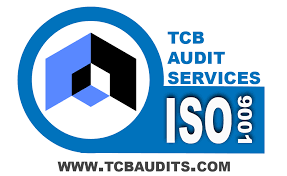Four Core Principles of a Successful Global Procurement Strategy
Global Procurement Strategy
Today’s manufacturing leaders face an extraordinary amount of pressure to transform their business into a more globally successful organization. It’s key for them to develop and implement a high-performance global procurement strategy.
Most businesses view global procurement strategy as the best way to reduce costs across the supply chain, but there are other ways to benefit as well. A global procurement approach should include the streamlined purchasing of technology, materials, and other important resources. By working to build a strategy, businesses have the chance to strengthen working relationships across different divisions of the company. The knowledge gained from those collaborations can be used to help improve performance.
Businesses need a long-term procurement strategy to ensure their supply chain workers can absorb it and understand how to implement it effectively. For organizations with different divisions or teams that may have issues working together, this could be a huge challenge. It’s essential to try and prevent these types of pitfalls by creating a winning global procurement strategy.
These are the core principles of a successful global procurement strategy.
Articulating responsibilities is crucial:
When business leaders work to create a global procurement strategy, they first focus on how individuals fit into the procurement hierarchy. There’s an assumption when creating hierarchies that the individuals who populate them will know exactly what to do. The reality is that if these individuals do not understand their responsibilities and how they fit into the process, they cannot work cohesively. Be sure to articulate each individual’s responsibilities and provide a sense of how they fit into the big picture.
Make sure the strategy applies to local, regional, and global levels:
It’s essential to consider how procurement will happen across all levels of the purchasing infrastructure. If a process works really well at the global level, it doesn’t a local or regional team will be able to carry out the same process.
Personal politics should NOT be a factor in decision-making:
Procurement strategy decisions should be made amongst a group in a systematic manner. It’s not okay for decisions to be influenced by company politics, or personal beliefs, emotions or self-interests. To avoid this problem, develop some basic criteria for all decision-making processes.
Announce achievements as the strategy is implemented:
For individual procurement teams and employees to see the value of working concertedly and in unison, they need to see results. For instance, tracking cost savings and reporting on the results in a clear, compelling manner to employees will help drive success. When workers are convinced they’ve made a difference to the bottom line, they’re more likely to work hard to achieve their goals.
Build and strengthen relationships:
Relationship-building is essential in any line of work; for global procurement, it means opportunities to identify additional efficiencies. For example, the achievement of important goals should be shared with employees and suppliers to help strengthen ties and gain more internal cooperation.
A smart global procurement strategy will help improve information management, drive process improvement, and support technology enablement. The winning strategy can be developed if there’s a direct focus on the core principles listed above.
AECI is a leading procurement and sourcing service provider for the electronics industry. AECI’s strategic procurement will enhance your existing processes and help to optimize your bottom line by providing a strategy for cost reduction and operational efficiency. We can complement your organization and improve your overall procurement performance. Contact us today for more information on our services.


